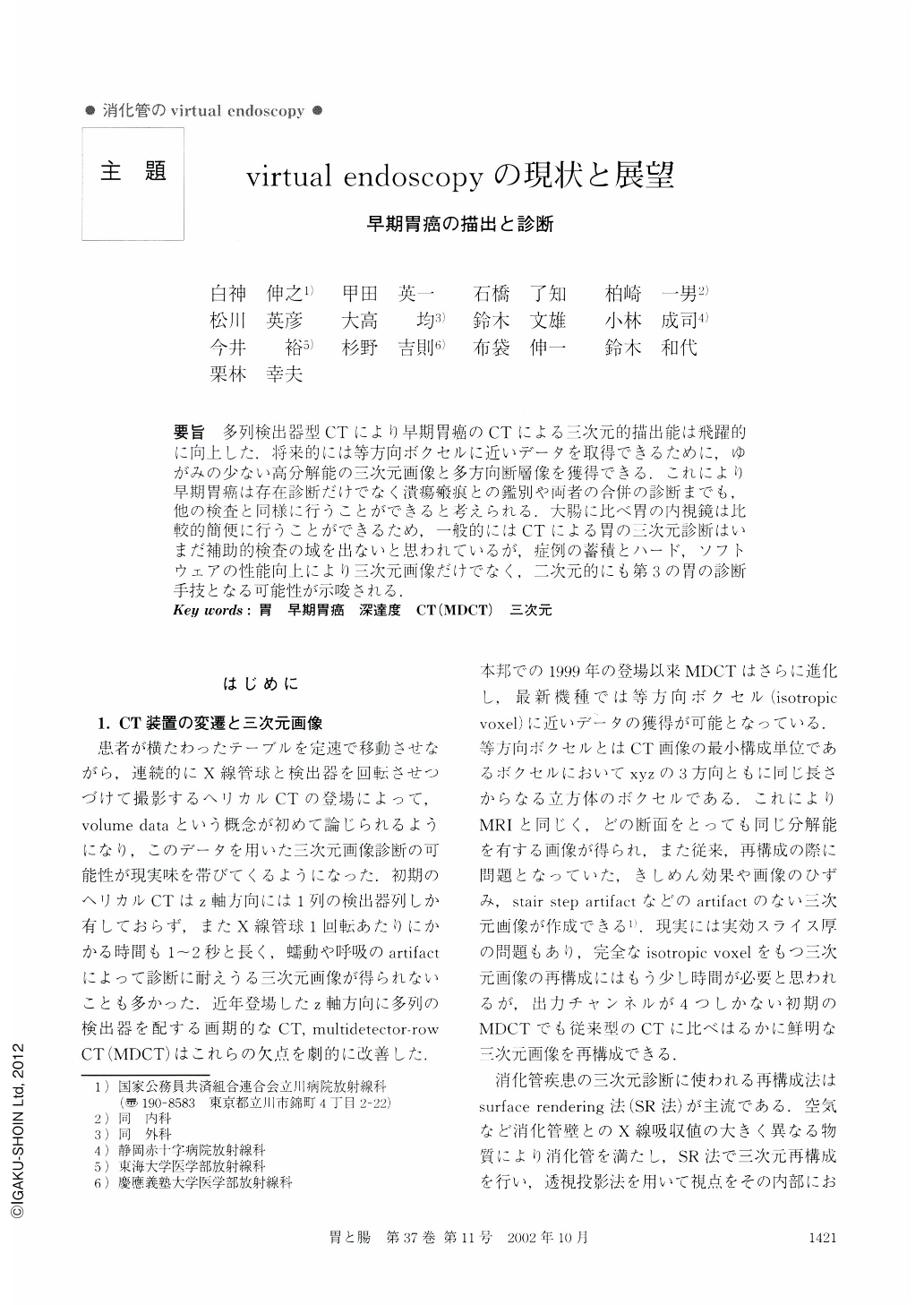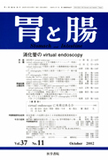Japanese
English
- 有料閲覧
- Abstract 文献概要
- 1ページ目 Look Inside
- サイト内被引用 Cited by
要旨 多列検出器型CTにより早期胃癌のCTによる三次元的描出能は飛躍的に向上した.将来的には等方向ボクセルに近いデータを取得できるために,ゆがみの少ない高分解能の三次元画像と多方向断層像を獲得できる.これにより早期胃癌は存在診断だけでなく潰瘍瘢痕との鑑別や両者の合併の診断までも,他の検査と同様に行うことができると考えられる.大腸に比べ胃の内視鏡は比較的簡便に行うことができるため,一般的にはCTによる胃の三次元診断はいまだ補助的検査の域を出ないと思われているが,症例の蓄積とハード,ソフトウェアの性能向上により三次元画像だけでなく,二次元的にも第3の胃の診断手技となる可能性が示唆される.
In the era of single detector-row CT (SDCT), it was difficult to assess the degree of tumor invasion to the gastric wall by CT, especially in early gastric cancer. It was chiefly because three-dimensional images recon-structed with SDCT datasets were not clear enough to depict and assess superficial depression and the character of converging folds. Now CT gastrography (CTG) using datasets acquired with multidetector-row CT (MDCT) can detect and assess early gastric cancer three-dimensionally with its higher spatial and temporal resolution than those with SDCT. Further more with its characteristics of wide observation range, non-restricted observation point of view, objectiveness, detectability of elevation and depression, it might detect and assess early gastric cancer better than conventional examinations. The other point of CTG is that it is the only method to be able to assess the gastric wall two dimensionally. Finally, we can assume pathology of early gastric cancer in combination with plain and dynamic enhancement study. As a conclusion, we wish to emphasis this promising examination has a potential to be one of the standards in diagnosing gastric lesions, although some problems remain to solve such as radiation exposure, cost benefitness, and education for reading.

Copyright © 2002, Igaku-Shoin Ltd. All rights reserved.


